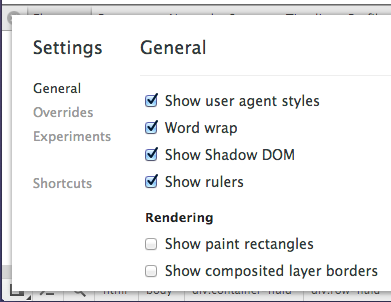Minification, Testing, and Documentation
To run tests, build minified files, or build documentation you need node and
grunt-cli on your system.
- install NodeJS using the instructions on their website
-
use
npmto install the GruntJS task runner for the command-linenpm install -g grunt-cli
Now for any repository in which you want to use tools, install the Node dependencies
and use Grunt to perform tasks. In the project’s root folder (e.g. <somepath>/platform/), run:
npm install
Tasks
Once things are installed, you may run the tests or use grunt to perform tasks.
Build minified project files (default):
grunt
Build documentation:
grunt docs
Run tests:
grunt test
Source maps
Toolkitchen polyfills the HTML Imports specification. In order for code to be debuggable at run-time, scripts embedded in components are injected into <head> in the main document. Tools/browsers that support source maps will identify these scripts as belonging to their source components.
Debugging Shadow DOM
In Chrome, native Shadow DOM is not inspectable. That is, you can’t use the DevTools to drill down into a Shadow Root.
To be able to inspect Shadow DOM, turn on “Show Shadow DOM” in the DevTools general settings:

After reloading the DevTools, Shadow DOM is inspectable and renders as #document-fragments in the tree.